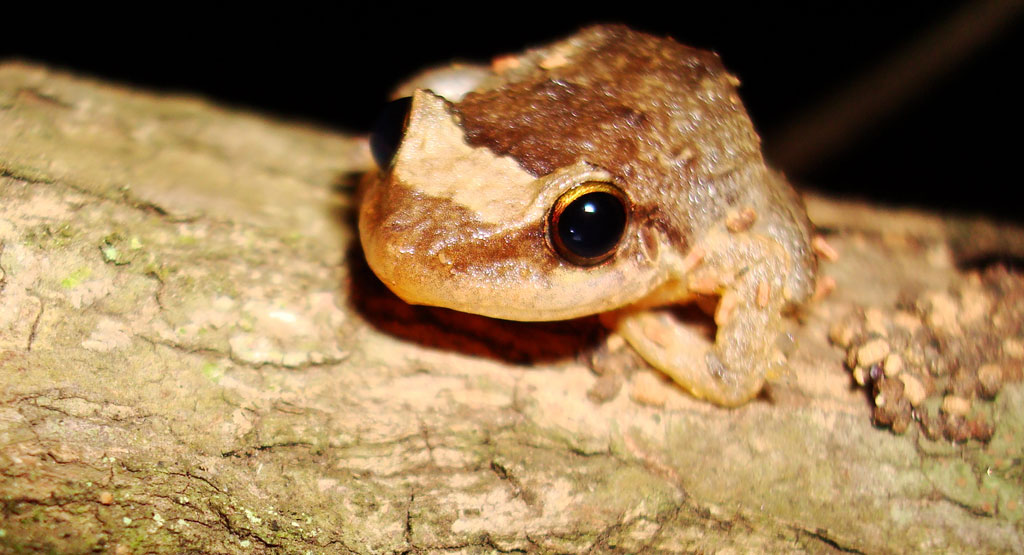 With public help and government support, Maui Invasive Species Committee has made inroads in its work to eradicate annoying coqui frogs. Since 2006, 11 of the 17 Maui populations of coqui frogs have been silenced, according to Lissa Strohecker, MISC outreach and education specialist. A crew of five people work weekly from 1 to 11 p.m. staking areas, mostly in East Maui, to eradicate the frogs. “We’ve had quite a bit of success,” she said. “The landowners are always happy when we can get rid of them.” For each populated area of coquis, there are as little as 20,000 to as many as 90,000 frogs per acre.
With public help and government support, Maui Invasive Species Committee has made inroads in its work to eradicate annoying coqui frogs. Since 2006, 11 of the 17 Maui populations of coqui frogs have been silenced, according to Lissa Strohecker, MISC outreach and education specialist. A crew of five people work weekly from 1 to 11 p.m. staking areas, mostly in East Maui, to eradicate the frogs. “We’ve had quite a bit of success,” she said. “The landowners are always happy when we can get rid of them.” For each populated area of coquis, there are as little as 20,000 to as many as 90,000 frogs per acre.
Experts say the coqui frog was accidentally introduced into Hawai‘i from Puerto Rico sometime in 1988. The coquis’ mating call has become a noise nuisance, reaching up to 90 decibels, equivalent to the sound of a lawn mower. “They start calling in the late afternoon and continue all through the night,” Strohecker said. Aside from the noise, coqui frogs pose a risk to the environment because they eat Hawai‘i’s unique insects and spiders. Scientists have expressed concern that an established coqui frog population could be a food source should brown tree snakes ever make their way into the islands. “It also has an impact on tourism,” Strohecker said. While most reports of coqui findings are in East Maui, MISC worked diligently with Ritz-Carlton Kapalua to get rid of coqui frogs reported by the hotel.
Dale Castleton, owner of Dale Castleton Plant Nursery in Kihei, was one of the first businesses to enroll in MISC’s voluntary coqui-free nursery program. The requirements for participation include agreeing to treatments of citric acid and regular inspections. “It was a lot of work, but it was worth the time to be free of coqui frogs,” Castleton said. To date, there are nearly 40 participants in MISC’s coqui certification program. Strohecker said MISC’s staff depend on visitors and residents to call them at 573-6472 whenever they hear the coqui frog. A location is declared coqui-free one year after callings are silenced.

